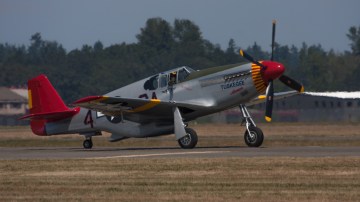Tuskegee University Revives Flight Training Program for a New Generation
Tuskegee revives flight training with a new aviation program at Moton Field—blending legacy and opportunity for future Black pilots in a high-demand field

Tuskegee University has officially launched a new Aviation Science program, bringing flight training back to Moton Field nearly 80 years after the first Black military pilots trained there. The program allows students to earn a Bachelor of Science degree while also pursuing a commercial multi-engine pilot license through a partnership with Republic Airways’ LIFT Academy.
Between 1941 and 1946, more than 1,000 men earned their wings at Tuskegee as part of the Tuskegee Airmen. They faced skepticism and systemic discrimination, but their determination and skill challenged the status quo and created a legacy that still influences aviation today. Now, students in the new program train on the same runways where those pioneering pilots once flew, combining classroom instruction, flight simulators, and hands-on training in Diamond DA40 and DA42 aircraft equipped with advanced glass cockpit technology.
The program addresses a long-standing gap in representation. Black pilots make up just 3.6 percent of pilots and flight engineers in the U.S., according to the U.S. Bureau of Labor Statistics. Tuskegee’s initiative is designed to give students not only the technical skills but also access to an industry that has historically underrepresented them. Beyond flight hours, students benefit from mentorship, professional guidance, and a network of support.
Fifteen students enrolled in the program’s first class, with enrollment expected to grow as national attention builds. Flight training can be completed in as little as three years within the four-year degree program. The university is also building partnerships with the FAA and other organizations to expand internship and career pathways after graduation.
The program is projected to create 35 full-time aviation-related jobs in Tuskegee over the next three years, with an average annual salary of $75,000. Additionally, 57 certified flight instructors will support the training at Moton Field.

“Tuskegee University is proud of its heritage of training pilots who serve our country,” said the university’s president and CEO. “As North America faces a pilot shortage of about 13,000 over the next 20 years, our new degree program will prepare aviators to serve through defense or commercial aviation.”
For students stepping into the program today, the significance goes far beyond any degree or license. It’s a bridge between history and opportunity—a place where the perseverance of the Tuskegee Airmen meets the ambition of a new generation. Students not only gain flight experience but also take part in a legacy that expands access in a field still marked by inequity. Moton Field may look different than it did in 1941, but it remains a runway where history continues to shape the future.



